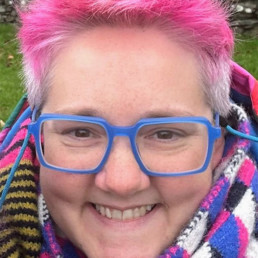
Written by Eleanor Formby
Eleanor Formby (she/her) is Professor of Sociology and Youth Studies at Sheffield Hallam University, UK. She has 25 years’ experience in (predominantly qualitative) social research and evaluation, and for nearly 20 years her work has focussed on the life experiences of LGBT+ people. Eleanor has written numerous articles in these areas and is the author of Exploring LGBT spaces and communities.
Next month will see Anti-Bullying Week (November 10-14), and Sheffield Hallam University research highlights that lesbian, gay, bisexual and trans (LGBT) young people are still at risk of being bullied at school.
The study is the largest of its kind ever conducted in England, with over 61,000 pupils and staff from 853 schools taking part. It focused specifically on homophobic, biphobic and transphobic (HBT) bullying—i.e. that directed at people because of their actual or assumed sexual or gender identity—and on LGBT inclusion in schools.
It’s often assumed that ‘progress’—thinking particularly about LGBT rights—is a steady march forward, and to be fair, the past 25 years have seen significant changes for LGBT people in the UK. In 2015, the UK was ranked number one on the ILGA-Europe rainbow map, which rates 49 European countries on the basis of laws and policies that directly impact on LGBT people’s human rights. Around the same time, the UK government invested over £6 million in efforts to prevent and respond to HBT bullying in schools, which included our research. The year our research finished, the Government announced that relationships and sex education (RSE) would become compulsory in English secondary schools—and that it should include LGBT content. For a while, there was reason to feel cautiously optimistic.
But things began to change.
Despite commissioning our research, the Conservative government delayed releasing the findings for five years—an unprecedented move. The study was only published after a change in government.
During this period, rhetoric from the government became increasingly hostile, particularly towards trans people. In April 2025, a high-profile supreme court ruling on gender was followed by a controversial ‘interim update’ from the Equality and Human Rights Commission. In the 2025 ILGA-Europe rainbow map the UK dropped to 22nd place—we’re now the second worst country for LGBT-related laws in Western Europe and Scandinavia.
Recently the government has also revised its guidance on RSE, with reduced references to trans people (just once in a subheading). It explicitly states that schools “should not teach as fact that all people have a gender identity”, and “should avoid materials that… encourage pupils to question their gender”. This language echoes Section 28—the infamous law that, until 2003, banned local authorities from “promoting homosexuality” and prevented schools from teaching the “acceptability of homosexuality”.
Against this backdrop, a new book demonstrates that HBT (homophobic, biphobic and transphobic) bullying is still happening—but also that schools can make a difference.
Our findings show that many schools respond to bullying after it happens, rather than trying to prevent it in the first place. In primary schools, efforts often focus on educating children about inappropriate language. Fewer schools are embedding HBT bullying prevention within everyday teaching, or in visible displays in school.
Where LGBT inclusion is happening, it often takes place in assemblies, or sometimes in secondary schools during PSHE (personal, social, health and economic education) lessons, or in ‘drop-down days’ when normal lessons are suspended. In some primary schools, specific books are used.
There are also barriers, for example a lack of time and staff capacity available in schools, and a lack of funding to invest in resources, facilities or training to help do this work well. Some staff don’t feel supported by school leadership. Others worry about complaints from parents or uncertainty about what’s ‘age appropriate’. In the current context, these concerns and associated lack of confidence are likely to grow.
But when schools get it right, there is real impact, for instance LGBT pupils—and those with LGBT family members—feel safer and more understood. Others feel more able to ask questions about issues that confuse or concern them.
This is why it’s so concerning that the UK seems to be moving backwards. Instead of helping schools create more inclusive environments, recent guidance—and arguably the suppression of important research—risk making things worse for LGBT young people, and those with LGBT family members. Teachers are left uncertain about what they’re allowed to say or teach, and pupils may feel more isolated.
It’s difficult to understand why any government would risk children and young people’s wellbeing in this way.
As we prepare to mark Anti-Bullying Week, it’s important to remember that (to borrow from previous policy, seemingly long-forgotten) every child matters—and deserves to feel safe and included, so schools need to address anti-LGBT bullying. To make that a reality, we need to support schools—not leave them uncertain or under-resourced.
